
Scoliosis & Postural Abnormalities, Synapse Physiotherapy
Introduction
A slipped disc, also known as a prolapsed or herniated disc, is a common yet often misunderstood spinal condition. Imagine your spinal column as a stack of sturdy bones (vertebrae) carefully cushioned by soft, gel-like discs. When one of these discs bulges outwards, it’s called a slipped disc.
It might surprise you to learn that slipped discs are more common than you think, affecting 5 to 20 adults per 1000 annually. This condition can cause significant discomfort and pain, interfering with your daily life and preventing you from enjoying the activities you love. Physiotherapy is often considered the best conservative treatment for a slipped disc. If you have this condition, you should seek physiotherapy treatments as soon as possible. You may search for physiotherapy services around you, such as ‘physiotherapy Cyberjaya’.
Risk Factor
Understanding the risk factors for a slipped disc can help in prevention and early intervention.
1. Aging and Gender
As you age, your discs become less flexible and more prone to tearing or rupturing, a process known as disc degeneration.
2. Gender
Men are also more likely to suffer from herniated discs than women, particularly between the ages of 20 and 50.
3. Physically Demanding Work
Jobs or hobbies that require repetitive lifting, bending, twisting, pulling, or pushing can increase the wear and tear on your spine, accelerating the natural degeneration process.
4. Improper Lifting Techniques
Lifting heavy objects incorrectly can put undue strain on your spine. Using your back muscles instead of your legs to lift weight can cause injury, especially if you twist while lifting
5. Body Weight
Carrying extra weight increases the strain on your spine, making it more likely for discs to herniate. Being overweight or obese can exacerbate this risk.
Sign & Symptoms
Experiencing a slipped disc can lead to various uncomfortable and sometimes debilitating symptoms. Here are the common signs and symptoms of a slipped disc:
General Symptoms
- Pain and Numbness: Typically occurs on one side of the body.
- Radiating Pain: Extends to your arms or legs, depending on the location of the slipped disc.
- Unexplained Muscle Weakness: Weakness in muscles served by the affected nerves, causing difficulty in lifting or holding items.
- Difficulty Walking: Pain that occurs when walking or standing
- Weakness and Stumbling: Muscles served by the affected nerves tend to weaken, leading to a higher chance of stumbling.
Symptoms Based on the Location of the Slipped Disc
- Lower Back (Lumbar Region)
- Lower Back Pain: Sharp or burning pain in the lower back, buttocks, thigh, and calf.
- Leg Pain: Pain that may extend to the back of the thigh or calf, even the sole of the foot.
- Numbness or Tingling: Radiating numbness or tingling in the legs or feet.
- Neck (Cervical Region)
- Shoulder and Arm Pain: Sharp or burning pain in the shoulder and arm, which can worsen with coughing, sneezing, or certain movements.
- Numbness or Tingling: Radiating numbness or tingling in the shoulder, arm, or hand.
Management
Seeking timely medical care for a slipped disc is crucial, especially if your pain travels down your arm or leg, or if you experience numbness, tingling, or weakness. Here are the primary medical management strategies for a slipped disc:
Conservative Treatment
- Activity Modification: Avoid movements that cause pain and incorporate rest.
- Pain Management: Use pain relief medications as recommended.
Surgery
Few people with herniated discs require surgery. However, it may be considered if conservative treatments fail to improve symptoms after six weeks, especially if you have:
- Poorly controlled pain
- Numbness or weakness
- Trouble standing or walking
- Loss of bladder or bowel control
Surgical Options:
- Diskectomy: Removal of the protruding portion of the disc. In rare cases, the entire disc must be removed, and the vertebrae might need to be fused with a bone graft.
- Spinal Fusion: Metal hardware is placed in the spine to provide stability during the bone fusion process, which takes months.
- Artificial Disc Implantation: In rare cases, a surgeon might suggest the implantation of an artificial disc.
How Does Physiotherapy Help You?
Following a thorough evaluation, our team will identify the cause of your prolapse and develop a personalized treatment plan to get you on the path to recovery. Here are some of the ways we can assist you:
Pain Management
- Pain Control: Utilizing various techniques to reduce pain and inflammation.
- TENS Therapy (Transcutaneous Electrical Nerve Stimulation)
- Ultrasound Therapy
- Hydrotherapy
- Massage Therapy
- Heat and Cold Therapy: Applying heat to relax muscles and cold to reduce inflammation and numb pain
Movement and Motor Control
- Re-education of Movement: Teach you proper movement patterns to avoid further injury.
- Motor Control Exercises: Enhancing your ability to control movements to prevent strain on the affected area.
Proprioception and Strengthening
- Exercises for Proprioception: Improving your body’s ability to sense movement, action, and location.
- Strengthening and Stability Exercises: Focusing on core stability and muscle strength to support and protect your spine.
Specialized Techniques
- McKenzie Method: A specific approach to back pain that involves exercises to centralize pain and improve spinal function.
- Spinal Manipulation and Mobilization: Techniques to improve spinal alignment and relieve pressure on nerves.
How to prevent it?
Preventing a prolapsed disc involves a combination of lifestyle adjustments and proper techniques.
- Maintain a Healthy Weight: Follow a balanced diet and engage in regular physical activity to maintain an appropriate weight.
- Exercise Regularly: Focus on exercises that strengthen your core, back and leg muscles. Activities like swimming are beneficial.
- Use Proper Lifting Techniques: Always bend at your knees, not your waist. Use your legs to lift heavy objects, and keep the object close to your body.
- Maintain Good Posture: Sit and stand with your back straight, shoulders back, and feet flat on the floor. Use ergonomic chairs and desks if you sit for long periods.
- Avoid Prolonged Sitting or Standing: Take regular breaks to move and stretch if you have a sedentary job or need to stand for long periods. Walk around for a few minutes every hour.
- Quit Smoking: Smoking reduces blood flow to the discs in your spine, causing them to degenerate more quickly.
- Stay Hydrated: Proper hydration keeps your spinal discs pliable and healthy.
- Wear Supportive Footwear: Choose shoes that provide good arch support and cushioning, especially if you stand or walk a lot.
FAQs
1. How long does it take to recover from a slipped disc?
Recovery time can vary, but with conservative treatment and physiotherapy, most patients recover within six weeks to three months.
2. Is surgery always required for a herniated disc?
No, surgery is only necessary if conservative treatments fail to relieve symptoms or if there are severe neurological deficits.
3. How does physiotherapy help with a slipped disc?
Physiotherapy aids recovery by reducing pain, improving mobility, and strengthening the muscles that support your spine.
4. Can slipped discs recur after treatment?
Yes, without proper care and preventative measures, such as strengthening and posture improvement, slipped discs can recur.
5. What activities should be avoided with a slipped disc?
Avoid heavy lifting, high-impact sports, and activities that require twisting or bending until your physiotherapist advises otherwise.
Conclusion
In summary, a slipped disc, or herniated disc, can disrupt your daily life and bring about considerable discomfort. If you’re dealing with a slipped disc or wish to prevent future issues, don’t hesitate to contact Synapse physiotherapy clinic. Our expert team is dedicated to developing personalized treatment plans that address your unique needs and guide you toward a safe and effective recovery. Let us help you get back to the activities you love with confidence and comfort.
Tags :

Back & Neck Pain
Conditions such as stiffness, postural abnormalities and muscle overuse from prolonged desk work at the office or home is more prevalent than most would think. We provide the necessary tools to fix you up and educate you on ergonomics which can unload unnecessary stress.
- Spine & Core Rehabilitation
- Strength & Conditioning Programme
- Pain Management
- Biomechanical Assessment
- Sports Physiotherapy
- Group Class
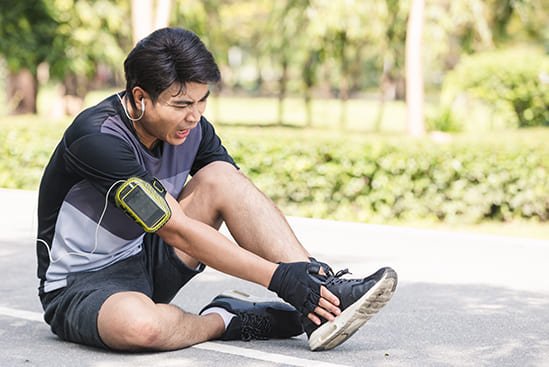
Sports Injuries
Rolled ankles, jarred knees, impinged shoulders are few conditions in the plethora of sports injuries which can hamper performance and limit our enjoyment of sports. Physiotherapy not only treats the symptoms of these conditions but propels your overall fitness to greater heights.
- Strength & Conditioning Programme
- Pain Management
- Biomechanical Assessment
- Sports Physiotherapy
- Shockwave Therapy
- Group Class

Work Desk Injuries
Conditions such as stiffness, postural abnormalities and muscle overuse from prolonged desk work at the office or home is more prevalent than most would think. We provide the necessary tools to fix you up and educate you on ergonomics which can unload unnecessary stress.

Pre-Post-Surgical Conditions
Surgery involves going through preparation both before and after. Physiotherapists play a vital role in getting your body ready for surgeries with circulatory, breathing and strengthening exercises. After the procedure, let us be there for your recovery and rehabilitation, taking it one step at a time.
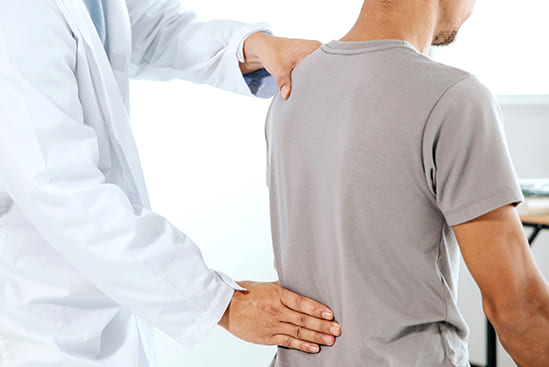
Scoliosis & Postural Abnormalities
The way we stand, sit, walk and sleep has influence over our posture and the overall balance of muscles controlling its alignment. A comprehensive screening can be done by our physiotherapists to detect abnormalities, which we will aid in correcting.
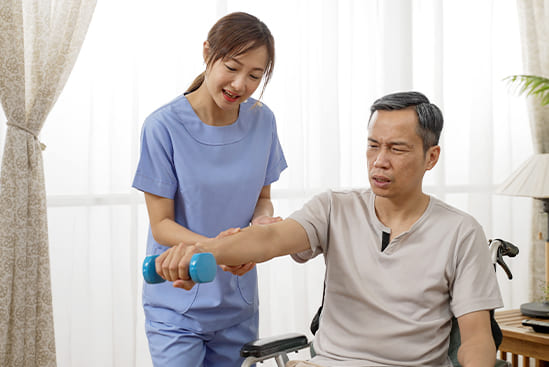
Neurological Conditions
Neurological disabilities such as stroke, nerve compression and neuropathies can be barriers for patients to live life to its fullest. We at Synapse are committed to help you overcome these hurdles by ensuring functional mobility and quality of life is at its optimum by providing the right treatment and exercises.
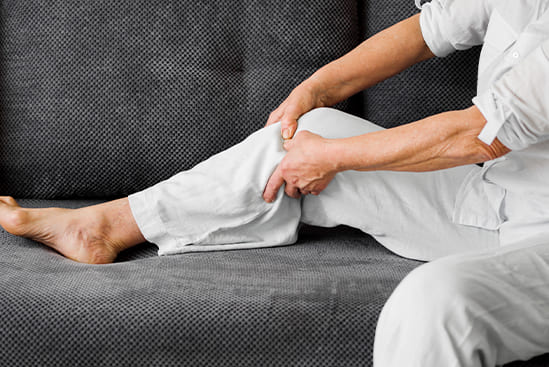
Osteoarthritis & Rheumatism
Joint degeneration and inflammation happens as the human body grows older, but that does not mean our way of life degenerates as well. Relief your joint pains with a joint effort together with your physiotherapist, who will provide pain-relief treatments and prescribe exercises for your wellbeing.
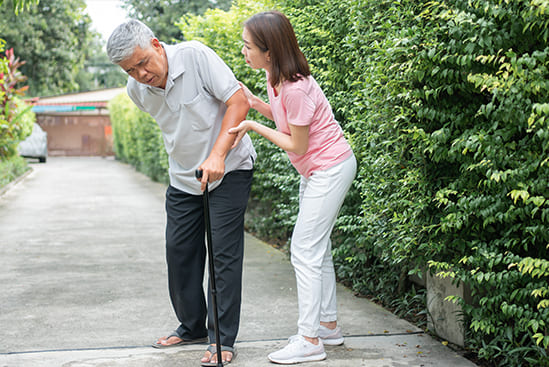
Conditions Relating To Elderly
Common conditions in the older age population include hips & knee pain, back & neck pain, osteoarthritis, rheumatism, fear of falling and many more. Aging and degeneration of bodily function is inevitable, but here at Synapse, we will help you live the best of your life.

Home Physiotherapy
We understand that some conditions or injuries can make it difficult to receive rehabilitation at our clinic be it mobility or transportation issues. Our objective is to provide you with the same high-quality physiotherapy services at home that you would receive in-clinic.
